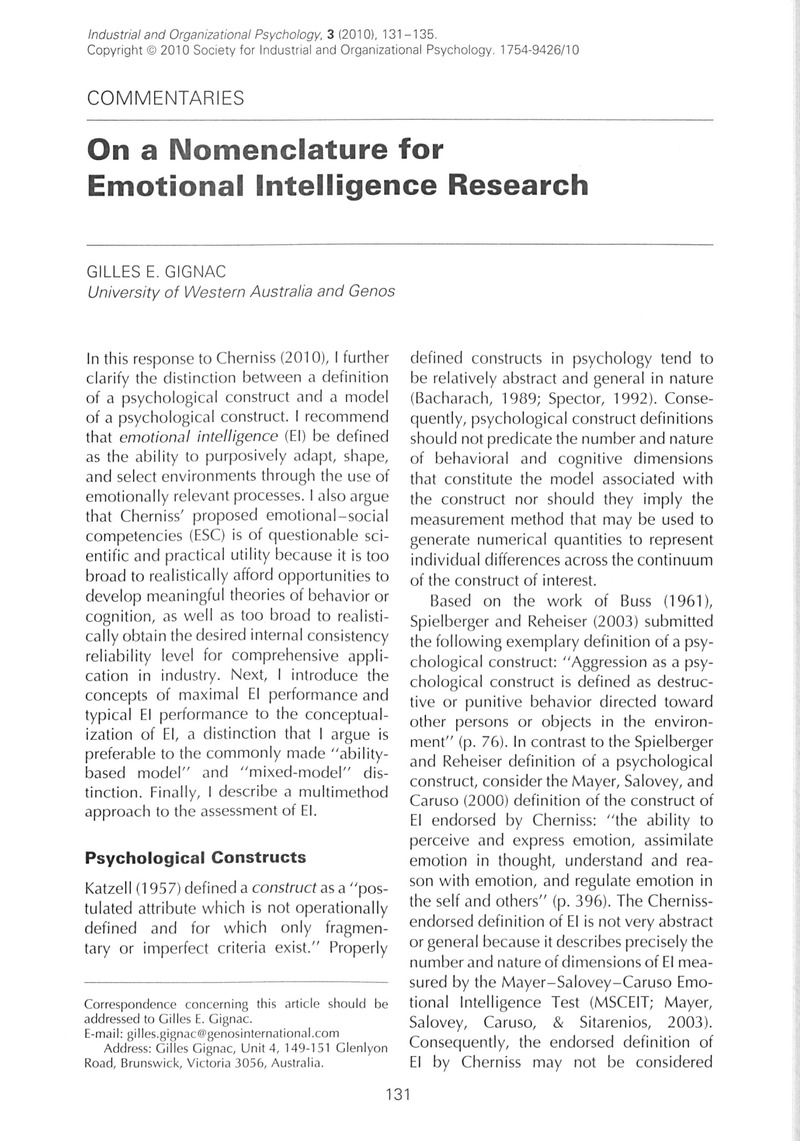Crossref Citations
This article has been cited by the following publications. This list is generated based on data provided by Crossref.
Cherniss, Cary
2010.
Emotional Intelligence: New Insights and Further Clarifications.
Industrial and Organizational Psychology,
Vol. 3,
Issue. 2,
p.
183.
Gignac, Gilles E.
Karatamoglou, Alexia
Wee, Sabrina
and
Palacios, Gabriela
2014.
Emotional intelligence as a unique predictor of individual differences in humour styles and humour appreciation.
Personality and Individual Differences,
Vol. 56,
Issue. ,
p.
34.
McCleskey, Jim
2014.
Emotional intelligence and leadership.
International Journal of Organizational Analysis,
Vol. 22,
Issue. 1,
p.
76.
Snowden, Austyn
Stenhouse, Rosie
Young, Jenny
Carver, Hannah
Carver, Fiona
and
Brown, Norrie
2015.
The relationship between emotional intelligence, previous caring experience and mindfulness in student nurses and midwives: a cross sectional analysis.
Nurse Education Today,
Vol. 35,
Issue. 1,
p.
152.
Masole, Lindiwe
and
van Dyk, Gideon
2016.
Factors influencing work readiness of graduates: An exploratory study.
Journal of Psychology in Africa,
Vol. 26,
Issue. 1,
p.
70.
Hughes, David J.
and
Evans, Thomas Rhys
2018.
Putting ‘Emotional Intelligences’ in Their Place: Introducing the Integrated Model of Affect-Related Individual Differences.
Frontiers in Psychology,
Vol. 9,
Issue. ,
Moscoso-Pacheco, Johanna
and
Sandoval-Caraveo, María del Carmen
2019.
Confiabilidad y validez de un instrumento para medir la inteligencia emocional en estudiantes de posgrado.
Revista de Filosofia y Cotidianidad,
p.
28.
Gignac, Gilles E.
and
Callis, Zoe M.V.
2020.
The costs of being exceptionally intelligent: Compatibility and interpersonal skill concerns.
Intelligence,
Vol. 81,
Issue. ,
p.
101465.
Dumciene, Audrone
and
Sipaviciene, Saule
2021.
The Role of Gender in Association between Emotional Intelligence and Self-Control among University Student-Athletes.
International Journal of Environmental Research and Public Health,
Vol. 18,
Issue. 22,
p.
11819.
Gignac, Gilles E.
2021.
People who consider themselves smart do not consider themselves interpersonally challenged: Convergent validity evidence for subjectively measured IQ and EI.
Personality and Individual Differences,
Vol. 174,
Issue. ,
p.
110664.
Al-Azzam, Majed Kamel Ali
Albash, Marah Jameel
Smadi, Ziad Mohd Ali
Almomani, Reham Zuhier Qasim
Al-Quran, Ali Zakariya
Al-Hawary, Sulieman Ibraheem Shelash
Eldahamsheh, Mohammad Mousa
Mohammad, Anber Abraheem Shlash
and
Mohammad, Abdullah Ibrahim
2023.
The Effect of Information Technology on Business and Marketing Intelligence Systems.
Vol. 1056,
Issue. ,
p.
1077.



